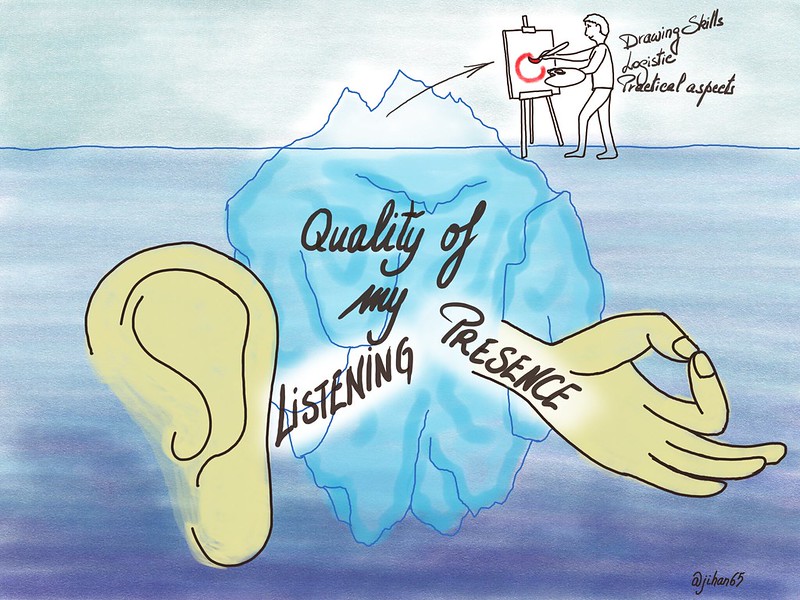On 5 May, Amy Lenzo (*) gave an online masterclass on “Hosting and harvesting online VS physical” to the community of practitioners of the Art of Hosting at the European Commission (**). My takeaways (actually apply to any online session):
“It’s not a question of technology, it’s a question of relationships”
- 90% of your experience, skills, practice as organiser of physical events can be transposed into online events. Reassuring, isn’t it?
- The quality of your presence, trust and how you hold space, are just as important online as in the physical world
- Never host alone an online session, be part of an hosting team
- The hosting team must consist of at least one process host and one tech host (for all technical aspects) or more for large groups
- The use of the camera is mandatory for speakers, and highly recommended for all participants (with muted mikes)
- To keep participants’ attention, speakers can only use the visible/audible part of their body language: their face and their voice. Then, it’s crucial to smile with the whole face and to have a catchy tone and rhythm of voice
- Keep in mind that everything is amplified online: your voice, your unconscious bias, space and time.

This was also my first live graphic recording using the Procreate app (***). Only a few days after installing it on my tablet (it’s crazy, I know, but I like these challenges). My first learnings to start with Procreate:
- Many years of experience with layers on Photoshop has helped me a lot. If you’re not familiar with layers, take time to learn how they work and to play with them
- Select your fave brushes in advance. You can waste precious time looking for what you need during a live event. Mine were Technical pen, Acrylic and Wet Acrylic, and Hard Airbrush (I still have to learn how to have them available in one click)
- Select your fave colours in advance for the same reason as for the tools (I still have to learn how to create my colour palette in advance)
- Know the undo/redo gestures
(*) Amy Lenzo on Linkedin – Twitter
(**) At the European Commission, the Art of Hosting is called the Art of Participatory Leadership

